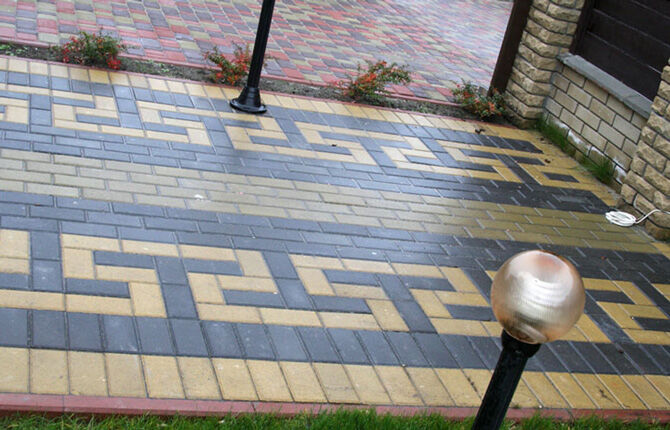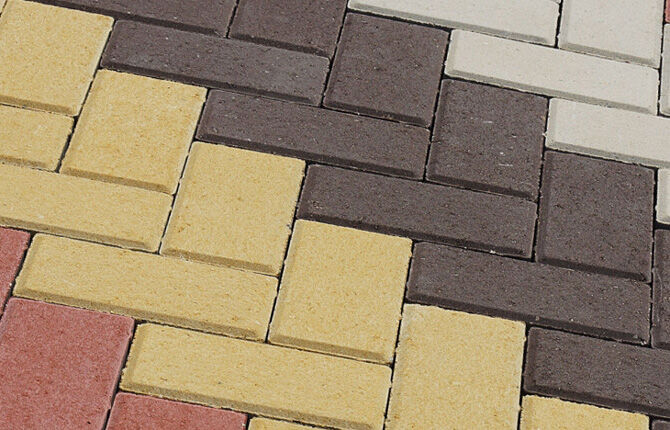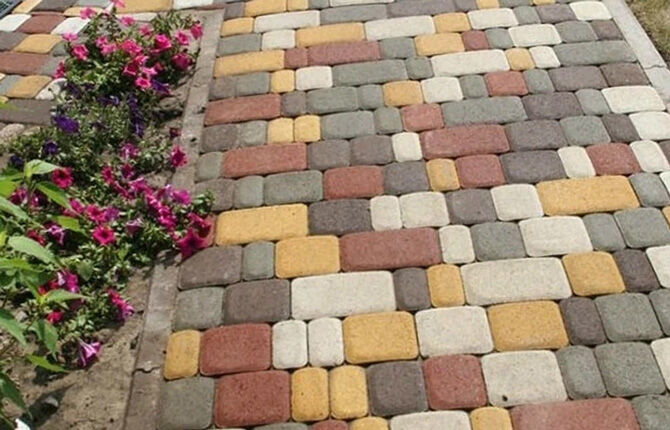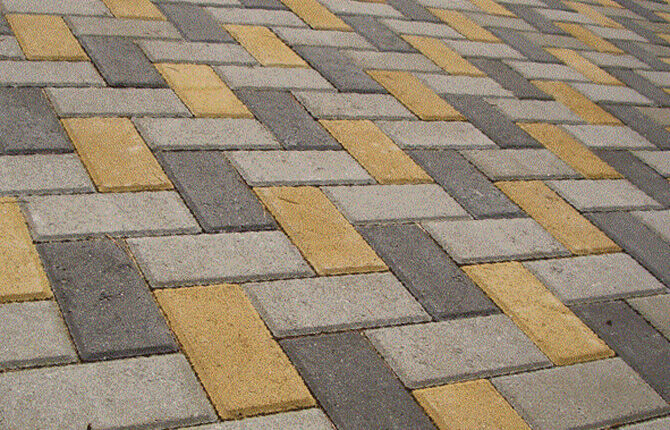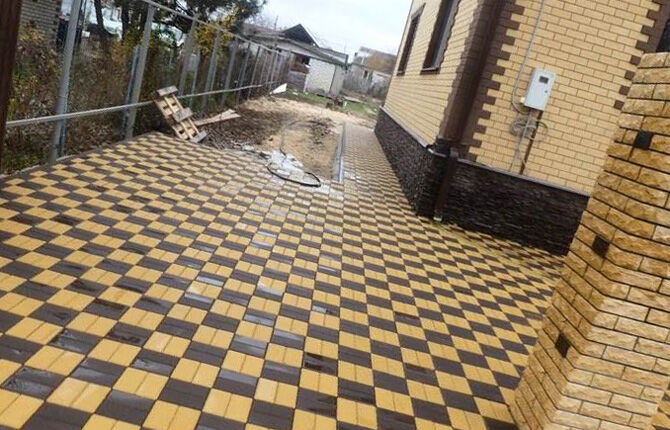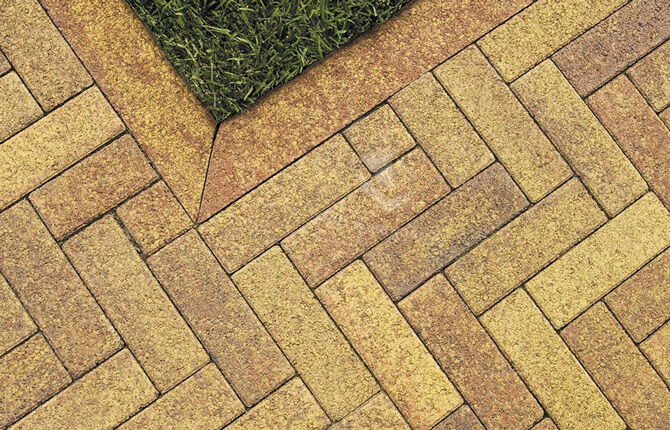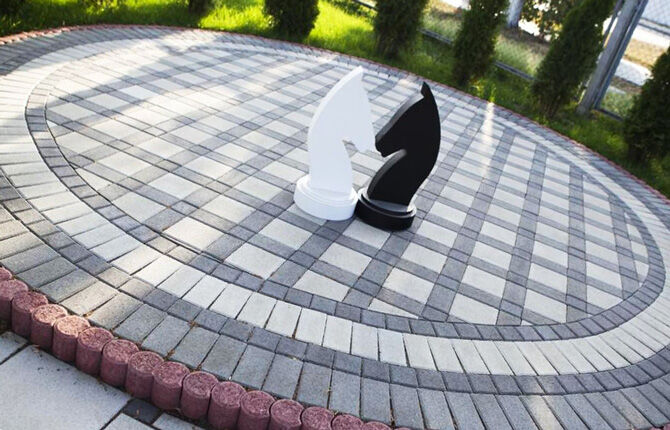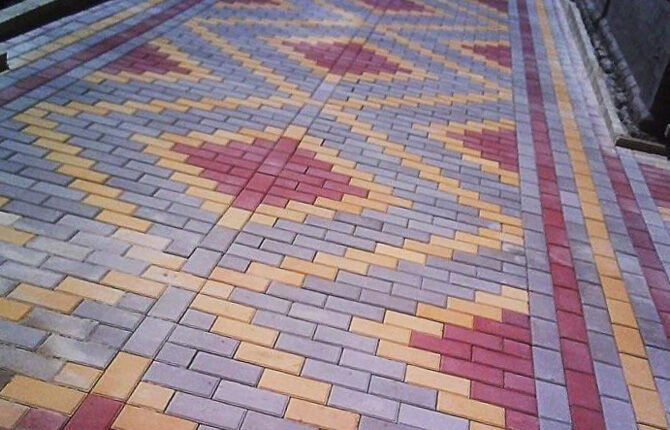Paving slabs Brick - types and installation methods
Paving slabs Brick is a popular and convenient material used to cover local areas, pedestrian paths, shopping areas and even highways. What makes it popular is the variety of sizes, shades, and textures.
Varieties and advantages
A special feature of Brick paving slabs is the imitation of clinker bricks. It is produced in the form of rectangular blocks 40-80 mm thick. To cover transport highways, products with a thickness of 100 mm are used.
Different versions of this material differ in the following parameters:
- Size. When choosing this indicator, they are guided by the further use of the coating.
- Shade. The most common blocks are red, white or gray. Although manufacturers offer more interesting options (blue, purple, etc.).
- The texture. From above, the product may resemble natural stone. Its surface can be smooth, rough, matte.
Brick paving slabs have become widespread in the construction of summer cottages, shopping areas, and pedestrian areas. She owes this to the following advantages:
- ability to withstand heavy loads;
- resistance to abrasion, chemicals, ultraviolet radiation;
- significant service life, subject to compliance with the technology for laying paving slabs Brick;
- frost resistance, the ability to withstand fluctuations in humidity and temperature;
- ease of installation and care;
- Suitable for any surface;
- the possibility of dismantling blocks and re-laying them in the future;
- convenience of visual zoning of space due to the shape of the product;
- compatibility with various architectural styles;
- safety (when the material from which the Brick paving slabs are made is heated, no harmful substances are released).
The weight of paving slabs Brick depends on its size. For example, a block measuring 200*100*60 mm weighs 2.6 kg, and a Block Eight weighing 400*400*40 weighs 18.3 kg.
Paving slabs “English cobblestones” - characteristics, features and installation method in the article Here.
Laying methods
There are various options for laying out Brick paving slabs:
- Herringbone. The angle of laying the blocks is 45/90 degrees.
- Chaos. In this case, there is no specific sequence of installation; everything is done randomly; elements of different sizes and shades can be used, which are randomly laid out on the surface. The result is unique.
- Network. This option resembles a Christmas tree. It involves alternating transverse and longitudinal masonry. The result is a kind of weaving.
- Chess. This option involves the use of Brick paving slabs in two shades. As a result of their alternation, a semblance of a chess board is obtained.
- Parquet. The layout is carried out in such a way that the result resembles the arrangement of parquet boards. This method is called the most “homey”, therefore it is often used when arranging the yard of a country house.
- Circle. It is one of the most difficult, but the result is extraordinary. The blocks are laid out in a circle.
- Pattern. This method involves using tiles of different colors in combination with other materials. The result may be a work of art, but it is not always practical.
When choosing a installation method, you should pay attention not only to your preferences, but also to the practicality of the option you like. For example, Herringbone can withstand the maximum load, and Parquet does not need to be chosen for places that are subject to a lot of pressure.
After choosing a pattern, you need to think about the installation method:
- On wet sand. This option is simple and suitable for arranging garden paths or areas that do not bear a heavy load.
- For cement-sand mortar. This method is considered more reliable. To prepare the solution, use 1 part cement with 5 parts sand. The mixture is applied in an even layer, 3-4 cm high. To prevent moisture from accumulating on the surface, make a slight slope.
- For a dry mixture of sand and cement. Before laying begins, the cement-sand mixture is moistened with water.
Below are a few more photos of Brick paving slabs laid in various ways.
Paving slabs in the form of bricks are a popular material used for finishing sidewalks, adjacent buildings and other areas. It is distinguished by its aesthetics, functionality and ability to withstand significant loads.
Which installation option do you prefer? Share the link to the article on social networks and save it in your bookmarks so as not to lose interesting and useful information.
Paving slabs "Brick". The best installation schemes in the video.
How to make paving slabs with your own hands - instructions, equipment and supplies in the article link.
Source:
- https://protrotuarnujuplitku.ru/trotuarnaya-plitka/kirpichik.html
- https://keramokub.ru/plitka/trotuarnaya-plitka-kirpichikom.html
- https://nuz.uz/interesnaya-informaciya/39628-preimushchestva-i-osobennosti-trotuarnoy-plitki-kirpichik.html
